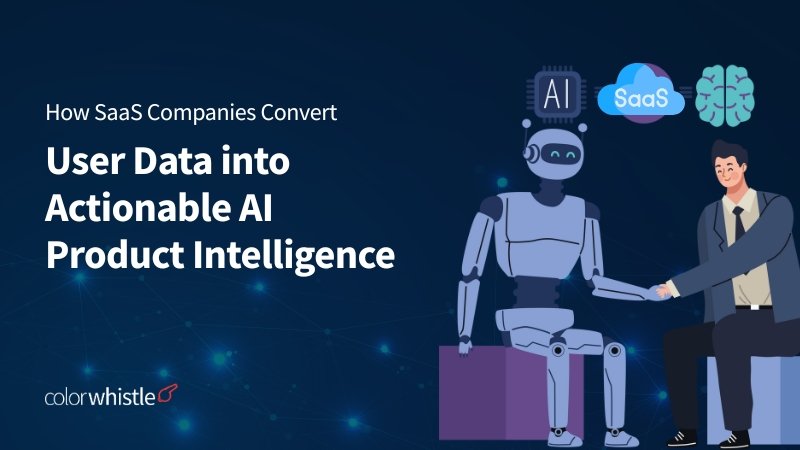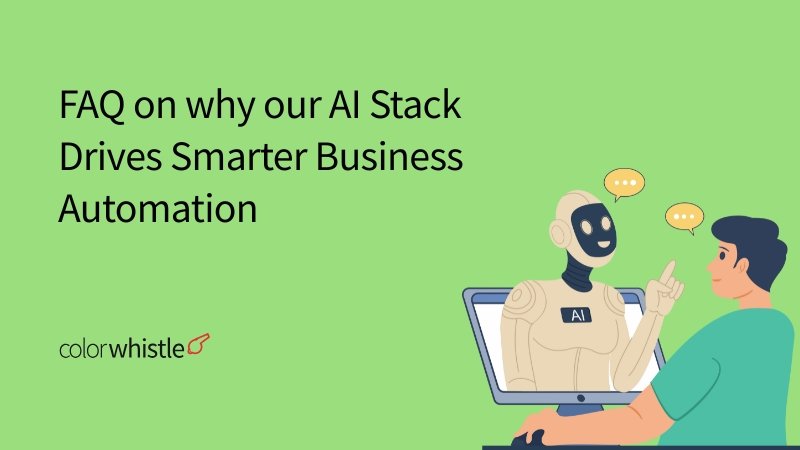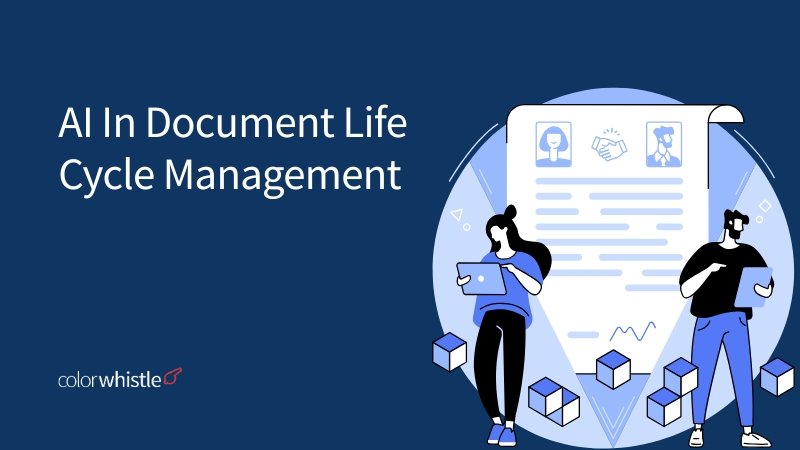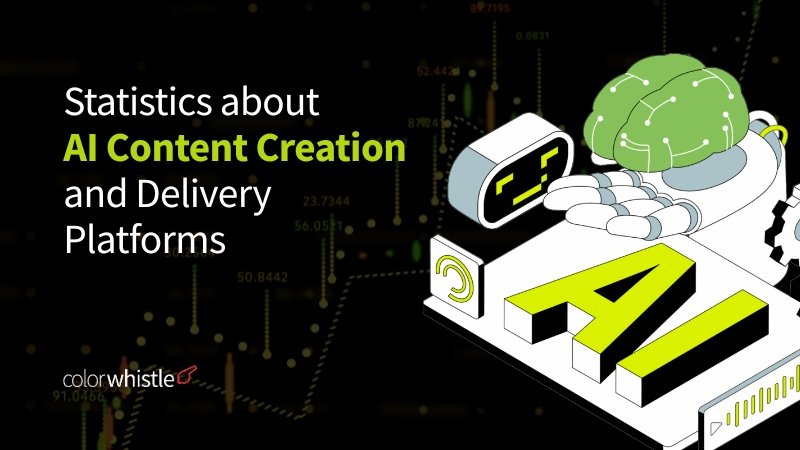In today’s highly competitive SaaS world, the ability to adapt and innovate depends on how well companies use user data. Every interaction, support ticket, survey response, and product review generated by customers contains valuable signals about what works and what doesn’t.
How SaaS Companies Convert User Data into Actionable AI Product Intelligence is no longer just a technical initiative; it’s a core business strategy that separates market leaders from the rest.
SaaS companies are under increasing pressure to:
Deliver seamless user experiences
Reduce churn
Accelerate feature adoption
Raw data alone is not enough; what matters is transforming that data into actionable AI product intelligence that informs product roadmaps, drives customer-centric enhancements, and unlocks new revenue opportunities. The integration of AI with comprehensive data collection strategies empowers SaaS businesses to:
- Innovate faster
- Focus resources more strategically
- Consistently exceed customer expectations
Key takeaway: Leveraging AI-driven analytics empowers SaaS businesses to:
Detect emerging trends and friction points before they impact retention
Personalize onboarding and engagement at scale
Prioritize development based on real user needs rather than assumptions
Benchmark performance against industry standards for smarter decision-making
By integrating advanced artificial intelligence with comprehensive data collection strategies, SaaS companies gain a sustainable competitive edge innovating faster, focusing resources more strategically, and consistently exceeding customer expectations.
The Role of User Data in Driving Product Intelligence for SaaS Companies
Capturing and leveraging user data is foundational to building intelligent, competitive SaaS products. Every interaction whether a support ticket, an in-app click, or direct customer feedback represents an opportunity to understand the evolving needs, pain points, and motivations of users.
The Value of Diverse Data Sources
A robust product intelligence strategy begins with a commitment to collecting data from every meaningful touchpoint. SaaS companies that limit themselves to a single feedback channel miss out on the nuanced insights that drive truly informed product decisions. Key sources include:
In-app behavior analytics: Tracks which features are used most often, where users drop off, and how workflows unfold within the product.
Customer feedback loops: Aggregates qualitative data from NPS surveys, customer conversations, reviews, and support tickets.
Product usage metrics: Quantifies adoption rates, feature engagement levels, and retention statistics across segments.
Third-party integrations: Supplement internal data with benchmarks or trends gathered from industry-wide platforms.
By integrating these streams into a centralized system, SaaS companies move beyond anecdotal input and develop a clear picture of user journeys at scale.
Also Read
Centralizing Feedback for Holistic User Profiles
Centralization transforms disparate feedback into structured intelligence. Modern SaaS organizations deploy platforms capable of automatically ingesting and organizing unstructured data such as open-ended survey responses or chat logs alongside quantitative behavioral signals.
“The most innovative teams don’t just listen; they synthesize signals from hundreds or thousands of users to spot patterns invisible to the naked eye.”
Benefits of Centralized Customer Feedback:
- Single source of truth: Product managers access unified dashboards displaying real-time sentiment analysis alongside concrete usage stats.
- Detailed user profiles: Cross-referencing in-app behavior with historical support interactions surfaces high-value segments and at-risk customers.
- Faster iteration cycles: With insights readily available, teams can prioritize roadmap items based on validated needs rather than gut instinct.
- Improved cross-team collaboration: Sales, support, marketing, and development share actionable intelligence removing silos that often slow innovation.
Informing Product Strategy with Unified Data
Effective product intelligence isn’t just about listening it’s about translating raw interaction data into strategic initiatives. When SaaS companies centralize their customer feedback and in-app behavior analytics, they unlock the ability to:
- Identify friction points impeding conversion or adoption
- Surface emerging feature requests by segment or persona
- Quantify the business impact of specific pain points
- Inform targeted interventions (e.g., onboarding flows for new cohorts or proactive outreach to disengaged users)
A data-driven approach ensures that every decision is grounded in comprehensive insight rather than isolated anecdotes or assumptions. This foundation supports agile product development cycles tuned directly to user needs.
To further enhance this process, implementing Product-led growth strategies can supercharge your SaaS growth by enhancing user experience and driving lasting conversions. Additionally, ensuring your website is optimized for user experience through effective website redesign services can also play a crucial role in achieving these goals.
Using AI-Powered Analysis Techniques to Discover Actionable Insights from User Behavior Data
Extracting value from user behavior data is no longer limited to manual analysis or structured information. Artificial intelligence (AI) allows SaaS companies to systematically process large amounts of unstructured data such as free-text survey responses, chat logs, support tickets, session replays, and clickstreams opening up new possibilities for understanding their products.
Advanced AI Algorithms for Unstructured User Data
SaaS AI solutions use a combination of advanced algorithms designed specifically for user behavior data:
Natural Language Processing (NLP)
NLP algorithms analyze open-ended feedback, customer conversations, and reviews to identify common issues, feature requests, sentiment trends, and emerging topics that traditional analytics might overlook.
Machine Learning-Based Clustering
By grouping similar user behaviors or feedback patterns, algorithms find segments within the customer base, highlighting unique needs or pain points across different groups.
Predictive Modeling
These models predict future user actions such as likelihood to churn or convert by examining behavioral signals in real time.
Anomaly Detection
AI systems quickly identify unusual activities (e.g., unexpected drop in feature usage), triggering immediate investigation.
The ability of these algorithms to quickly and accurately analyze millions of data points gives SaaS teams a clear understanding of what truly makes customers happy and keeps them coming back.
Real-World Examples: Trend Detection & Customer Segmentation
AI-powered trend detection often provides breakthrough insights for SaaS product teams:
“Using NLP-driven analysis across our support tickets and NPS survey comments, we identified a recurring complaint about our onboarding flow that had gone unnoticed. Continuous improvements led to a 20% reduction in time-to-value for new accounts.”—Product Manager, B2B SaaS Platform
Customer segmentation powered by machine learning also leads to significant product development:
A leading SaaS CRM platform used AI clustering on user interaction logs. The system found a group of users repeatedly having trouble with workflow automations. Product managers prioritized a targeted tutorial series and revamped the automation UI, resulting in increased adoption and reduced support tickets from this group within weeks.
Subscription analytics tools use predictive modeling to identify at-risk customers based on declining engagement metrics or negative sentiment in feedback. By bringing these insights to light early on, customer success teams can intervene with personalized outreach and offers.
From Big Data Noise to Strategic Product Moves
The shift from raw event logs and scattered feedback into actionable intelligence is driven by the ongoing use of AI-powered techniques. Unstructured user behavior data, when analyzed using advanced algorithms, becomes the basis for strategic decision-making, leading not just to small improvements but major product enhancements that perfectly match changing customer needs.
As part of this transformation, AI technologies are reshaping the development of scalable vertical SaaS solutions for niche markets. This move towards more specialized solutions is further supported by AI app development services that enable businesses to create next-gen mobile/web applications with artificial intelligence.
Transforming Raw User Data into Strategic Business Opportunities through Intelligent Analytics
SaaS companies can turn raw user data into valuable business opportunities by using intelligent analytics to find actionable insights. This process involves several steps and methods designed to meet specific business needs and enhance product offerings.
Approaches to Convert Raw Data into Actionable Insights
Data Aggregation and Normalization:
- Collect data from various sources such as user interactions, support tickets, surveys, and reviews.
- Normalize the data to ensure consistency and accuracy, making analysis easier.
AI-Driven Trend Analysis:
- Use machine learning algorithms to find patterns and trends in large datasets.
- Identify emerging user needs, preferences, and pain points that can guide product development.
Customer Segmentation:
- Segment users based on behavior, demographics, and feedback to customize product features and marketing efforts.
- Use clustering algorithms to group similar users for more focused interventions.
Predictive Analytics:
- Use predictive modeling to forecast future user behaviors such as churn rates or feature adoption.
- Make proactive changes to product strategy based on these predictions.
Sentiment Analysis:
- Analyze textual data from user reviews and support interactions to understand customer sentiment.
- Address negative sentiments quickly to improve user satisfaction.
Case Studies: Leveraging AI-Powered Analytics
Reducing Churn Rates
HubSpot successfully reduced its churn rates by implementing AI-driven predictive analytics. By analyzing user behavior data, HubSpot identified key indicators of potential churn, such as decreased logins or reduced feature usage. The company then created targeted retention campaigns addressing these friction points, leading to a significant reduction in churn rates.
Addressing Critical User Pain Points
Slack utilized AI-powered sentiment analysis to analyze feedback from its extensive user base. By processing large volumes of textual feedback, Slack identified common pain points related to its notification system. The insights prompted Slack to redesign the notification settings interface, resulting in improved user experience and higher engagement levels.
Enhancing Feature Adoption
Intercom employed customer segmentation techniques powered by AI to understand how different user groups interacted with new features. By segmenting users based on their usage patterns and feedback, Intercom tailored its onboarding processes and in-app guidance for each segment. This personalized approach led to a noticeable increase in feature adoption rates across diverse user groups.
By adopting these approaches, SaaS companies can transform raw data into strategic business opportunities that drive meaningful improvements in their products and customer experiences. Harnessing the power of intelligent analytics enables businesses to uncover valuable insights that are crucial for staying competitive in the market.
4. Leveraging AI Recommendations for Personalization and Automation in SaaS Product Strategy
AI algorithms empower SaaS businesses to craft personalized communication journeys and onboarding experiences at scale, significantly enhancing user engagement and satisfaction. By leveraging AI recommendations, companies can automate various aspects of their product strategy to deliver tailored experiences that resonate deeply with individual users.
Automated Communication Workflows
AI-driven automated communication workflows enable SaaS companies to provide timely and relevant interactions with their users. These workflows can be designed to trigger specific communications based on user actions or behaviors within the platform:
Onboarding Emails: Sending personalized welcome emails that guide new users through the initial setup process.
Feature Highlight Notifications: Informing users about new features or updates that are most relevant to their usage patterns.
Engagement Reminders: Nudging inactive users to re-engage with the platform through targeted messages.
For instance, a project management tool might use AI to analyze user behavior and determine when a team is likely struggling with a particular feature. The system could then automatically send an email offering tips and resources to help them overcome these challenges.
Personalized Onboarding Processes
Effective onboarding is crucial for user retention. AI can tailor onboarding processes to fit the unique needs of each user, ensuring they derive maximum value from the product as quickly as possible:
Adaptive Tutorials: Dynamically adjusting tutorial content based on the user’s progress and interaction history.
Contextual Help: Providing in-app assistance that is directly related to the user’s current task or issue.
Customized Learning Paths: Offering personalized training modules that align with the user’s specific goals or role within their organization.
A customer relationship management (CRM) software could utilize AI to identify which features new sales representatives are likely unfamiliar with, providing them with targeted tutorials and resources to accelerate their proficiency. This is where AI-driven automation comes into play, transforming CRM systems by boosting efficiency and scaling businesses with smart workflows.
Benefits of AI Recommendations
The implementation of AI recommendations in personalization and automation offers several key benefits:
- Scalability: Automating personalized interactions allows SaaS companies to maintain high levels of engagement without requiring proportional increases in customer support resources.
- Enhanced User Experience: Tailored experiences lead to higher satisfaction rates as users feel more understood and supported by the platform.
- Increased Retention: Effective onboarding and continuous personalized engagement help reduce churn rates by ensuring users consistently find value in the product.
An example of successful implementation can be seen in a SaaS company specializing in e-commerce solutions. By using AI-powered recommendations, they were able to personalize marketing campaigns for individual customers, resulting in a significant increase in conversion rates and customer loyalty.
AI algorithms enable SaaS businesses to not only automate but also continuously optimize their communication workflows and onboarding processes, ensuring each user receives a unique experience that drives long-term engagement. Additionally, similar principles of AI workflow automation can be applied across various sectors like retail, enhancing efficiency through smart integration with management systems.
Validating Product Enhancements with AI-Driven Benchmarking and Collaboration Tools for SaaS Teams
Benefits of AI-Powered Benchmarking Tools
Efficient Comparison: AI-driven benchmarking tools enable SaaS companies to swiftly compare their product performance metrics against industry benchmarks or competitors’ offerings.
Data-Backed Insights: By leveraging AI algorithms, teams can access data-backed insights that facilitate informed decision-making regarding feature prioritization and pricing strategies.
Competitive Analysis: SaaS businesses gain a competitive edge by understanding where they stand relative to industry standards and identifying areas for improvement.
Strategic Decision-Making
Informed Choices: AI-powered benchmarking tools provide the necessary data for making strategic decisions on enhancing product features or adjusting pricing models.
Risk Mitigation: By validating product enhancements through benchmarking, companies reduce the risk associated with changes and ensure investments are aligned with market demands.
Performance Optimization: Continuous benchmarking allows SaaS teams to optimize their product offerings based on real-time performance comparisons and industry trends.
Collaboration Tools for Enhanced Insights
Real-Time Collaboration: Integration of AI-driven insights into collaboration platforms like Slack or Microsoft Teams fosters real-time decision-making across cross-functional teams.
Actionable Intelligence: Collaborative tools ensure that insights derived from benchmarking are actionable, leading to swift implementation of identified improvements.
Knowledge Sharing: AI facilitates the sharing of benchmarking results and performance metrics within teams, enabling a unified approach to product enhancement strategies.
By harnessing AI-powered benchmarking tools, SaaS companies can validate their product enhancements effectively, make data-driven strategic decisions, and foster collaboration among teams for streamlined implementation of improvements. The ability to compare performance metrics against industry standards empowers businesses to stay competitive, mitigate risks, and optimize their offerings in alignment with customer needs and market trends.
Moreover, integrating customized AI solutions with no-code and low-code platforms can further enhance the efficiency of these processes. This approach not only simplifies the implementation of advanced AI technologies but also democratizes access to these powerful tools across various roles within the organization.
Examples of Platforms Supporting Processes
SaaS companies have access to various platforms that enable them to transform user data into actionable AI product intelligence. These platforms combine manual tagging/structuring methods with advanced machine learning techniques to provide comprehensive solutions.
1. Pendo’s Software Experience Management Platform
Pendo offers a robust platform designed to analyze billions of interactions, helping SaaS businesses enhance software usability.
It provides features such as in-app guides, feedback collection, and product usage analytics.
The platform leverages AI to identify trends and user behavior patterns, facilitating data-driven decisions for product improvements.
2. Dovetail’s AI-Powered System
Dovetail specializes in converting customer feedback into strategic insights.
The tool supports manual tagging and structuring of data while utilizing AI to automate the analysis process.
By integrating various data sources like surveys, interviews, and support tickets, Dovetail enables teams to uncover actionable insights efficiently.
3. Birdie’s Voice of Customer Automation
Birdie focuses on automating the reporting of Voice of Customer (VoC) metrics.
It collects data from multiple channels and applies AI algorithms to detect sentiment, categorize feedback, and highlight critical themes.
This platform helps SaaS companies prioritize customer issues and improve their products based on real-time feedback
Also Read
4. Heap Analytics
Heap offers a comprehensive analytics platform that captures every user interaction automatically.
It uses AI to process vast amounts of unstructured data, providing detailed insights into user behavior without requiring extensive manual tagging.
The platform allows teams to visualize user journeys, identify friction points, and optimize feature adoption strategies.
5. Amplitude
Amplitude is renowned for its advanced product analytics capabilities.
It combines manual event tagging with machine learning models to understand user engagement and retention patterns.
Teams can leverage Amplitude’s insights for A/B testing, cohort analysis, and personalized experiences tailored to different user segments.
These platforms exemplify how SaaS companies can effectively convert user data into actionable AI product intelligence. By integrating both manual and automated approaches, they offer powerful tools for driving continuous product innovation and enhancing customer satisfaction.
In addition to these platforms, it’s also important for SaaS companies with WordPress websites to consider implementing WordPress Maintenance Mode. This feature can be beneficial during updates or changes to the site, ensuring a smooth transition while maintaining the user experience.
Conclusion
By integrating AI-driven analytics with user data, SaaS companies unlock a myriad of product intelligence benefits. This potent combination empowers businesses to:
Enhance Product Development: AI insights guide development teams to prioritize features that directly address user needs and pain points.
Boost Customer Satisfaction: Tailored experiences and proactive issue resolution foster deeper customer engagement and loyalty.
Drive Strategic Decision-Making: Real-time data analytics provide a solid foundation for informed decisions, reducing risk and optimizing resource allocation.
The future potential of blending human expertise with advanced AI technologies lies in driving continuous innovation. As AI tools become more sophisticated, their ability to interpret complex datasets will further refine SaaS product strategies.
Embracing these innovations ensures that SaaS companies remain agile, competitive, and responsive to evolving market demands.
FAQs (Frequently Asked Questions)
Why is user data essential for driving AI product intelligence in SaaS companies?
User data, including customer feedback and in-app behavior, provides SaaS companies with diverse and comprehensive insights. Collecting and centralizing this data enables the creation of detailed user profiles that inform product strategies, ultimately enhancing AI-driven product intelligence.
How do AI-powered analysis techniques help SaaS companies uncover actionable insights from user behavior data?
AI algorithms can process large volumes of unstructured user data to detect trends and segment customers effectively. This advanced analysis allows SaaS businesses to identify key patterns and behaviors, leading to successful product enhancements and improved customer experiences.
What approaches can SaaS companies use to transform raw user data into strategic business opportunities?
By leveraging intelligent analytics, SaaS companies can identify user friction points and churn rates from raw data. These actionable insights enable targeted improvements in products and customer experiences, as demonstrated by case studies where AI-powered analytics reduced churn and addressed critical pain points.
In what ways can AI recommendations enhance personalization and automation within SaaS product strategies?
AI-driven recommendations facilitate personalized communication journeys and onboarding experiences at scale. By automating workflows based on individual user data, SaaS businesses can deliver tailored interactions that improve engagement and retention throughout the customer lifecycle.
How do AI-driven benchmarking and collaboration tools assist SaaS teams in validating product enhancements?
These tools allow SaaS companies to compare their product performance metrics against industry standards or competitors. Such benchmarking supports informed strategic decisions regarding feature prioritization and pricing models, ensuring product enhancements are validated through data-driven insights.
Which platforms support the conversion of user data into actionable AI product intelligence for SaaS companies?
Platforms like Pendo’s Software Experience Management and Dovetail’s AI-powered system offer end-to-end solutions combining manual tagging with automated machine learning techniques. These platforms help SaaS companies implement effective data conversion processes to drive AI-enhanced product intelligence.
What’s Next?
Now that you’ve had the chance to explore our blog, it’s time to take the next step and see what opportunities await!





